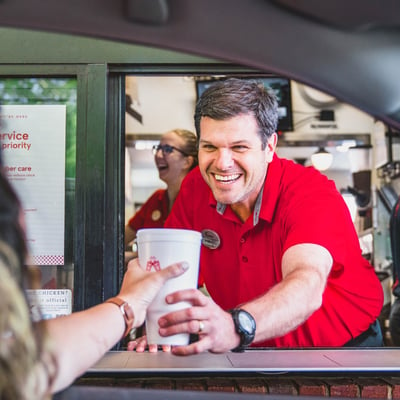Have you ever wondered why obtaining a bank loan isn’t as easy as shopping online? Or why selecting a health insurance policy isn’t as quick as booking a hotel?
The modern consumer has higher expectations and is increasingly asking these questions. Brands that cater to these expectations stand to beat the competition and garner customer loyalty.
So, if you think you know your competition, think again.
A senior executive at IBM once captured the modern consumer’s needs: “The last best experience anyone has anywhere becomes the minimum expectation for the experience they want everywhere.”
This statement challenges most executives’ understanding of competition —that they’re limited to major players or emerging brands in their industry. However, what if the real competition extends beyond your industry? How do brands craft a winning strategy when they’re not just competing with industry peers but also with ever-evolving customer expectations shaped by their best experiences in other sectors?
In the past,, brands gauged their competition based on rivals within their industry. A car dealership compared itself to other car dealers, a bank to other banks. This approach, while logical, is increasingly becoming outdated. In a connected world where consumers can instantly compare services and products across sectors, their expectations are no longer siloed within industry lines.
A coffee shop isn’t just competing with the café next door but also with the fast, personalized service of tech firms or the immersive experience of a luxury retailer. This broader perspective on competition compels brands to innovate continually, not just in their product or service offerings but in customer experience, convenience, and reliability.
The story of Amazon epitomizes this change. Once an online bookstore, Amazon became a colossal e-commerce platform, challenging bookstores and retailers across countless sectors. Their competitive edge? Understanding and setting new benchmarks in customer expectations.
Most recently, Dubai International Airport set new benchmarks in its sector by introducing a new biometric system that allows travelers to Dubai to travel without a passport, which makes the experience more pleasant.
Rethinking competition means brands must now consider how they stack up against the best experience a customer has had anywhere, not just against their traditional industry competitors. It’s a move from industry-focused to customer-experience-focused competition, a transition that requires a deep understanding of customer expectations far beyond industry boundaries.
Role of Market Research in Revealing True Competitors
Market research is integral to identifying a brand’s opportunities. It helps companies understand who they compete against and their customers’ evolving expectations. For instance, a fast-food chain might find its real competition lies not only with other fast-food outlets but with the expected experience whenever or whatever they buy.
Chick-fil-A, a U.S. fast-food chain known for its chicken sandwiches, redefined its customer service by looking beyond its immediate competitors in the fast-food industry. This venture was initiated through a partnership with Horst Schulze, the COO of Ritz-Carlton at the time, as the hotel chain is synonymous with luxury and exceptional customer service.
The Challenge:
Chick-fil-A was already performing well against its direct fast-food competitors. However, Schulze’s assessment that they were the “best of a bad lot” challenged them to aim higher, to compete not just with other fast-food chains but also with sit-down and fine-dining restaurants known for their superior customer service.
Market Research and Strategy:
To bridge this gap, Chick-fil-A executives thoroughly analyzed these higher-end dining experiences. They conducted surveys and customer feedback sessions to understand the most valued service elements in these settings. The result was the creation of the “Core 4” principles of customer service, focusing on creating eye contact, sharing smiles, using an enthusiastic tone, and personalizing customer interactions.

Further Consultation with Danny Meyer:
Chick-fil-A didn’t stop with the insights from Ritz-Carlton. They also consulted with Danny Meyer of Union Square Hospitality Group, who is renowned for his hospitality expertise. Meyer, who later founded the popular fast-casual chain Shake Shack, worked with Chick-fil-A to deepen their understanding of hospitality, emphasizing the importance of going the extra mile in service, a relatively uncommon fast food concept.
Impact and Results:
Implementing these strategies led to a significant transformation within Chick-fil-A’s service model. As a Chick-fil-A executive noted, the impact on sales, profits, and overall customer engagement was profound. The adoption of “second-mile service” became a hallmark of Chick-fil-A, noticeably differentiating them from their traditional fast-food competitors.
Competitive Analysis Across Industries
Conducting a competitive analysis beyond your immediate industry is crucial. This broader approach can uncover valuable insights and innovative practices from various sectors, offering a more comprehensive view of the competitive terrain.
How to Conduct a Cross-Industry Competitive Analysis
Identify Key Competitors in Other Industries: Identify companies in other sectors admired for customer service, innovation, or efficiency. These could be organizations your customers frequently compare you to, even if they are outside your direct line of business.
Gather Information: Utilize public resources like company websites, press releases, case studies, and industry reports to gather information about these competitors. Pay attention to their business models, customer engagement strategies, marketing approaches, and operational efficiencies.
Analyze Customer Reviews and Feedback: Look at customer reviews and feedback for these companies. Platforms like social media, online forums, and review sites can provide insights into what customers value in their experiences with these brands.
Study Their Service Delivery and Processes: Examine how these companies deliver their services or products. What makes their process stand out? How do they handle customer service, and what are their operational efficiencies?
Benchmark Against Best Practices: Compare these findings against your practices. This benchmarking should cover customer experience, service speed, technological adoption, and innovation.
SWOT Analysis: Conduct a SWOT (Strengths, Weaknesses, Opportunities, Threats) analysis for both your company and the companies in other industries. This comparison can highlight areas for improvement and potential opportunities for your brand.
Learning from Best Practices in Different Sectors:
- Adopting Technological Innovations: Look at how tech companies use technology to enhance customer experience and consider how you could implement similar technologies in your sector.
- Customer Service Excellence: Study the customer service strategies of companies known for outstanding customer care, like luxury hotels or high-end retailers, and integrate applicable elements into your customer service approach.
- Efficiency Models: Analyze the operational efficiency of companies in industries like manufacturing or logistics. Their practices could offer insights into streamlining your processes.
- Innovative Marketing Strategies: Observe companies’ marketing tactics in creative industries or those that have successfully tapped into new customer segments.
- Sustainability Practices: Learn from companies leading in sustainability and environmental responsibility. For instance, even if you are a beverage brand, you can learn from Patagonia, a clothing brand that is leading in sustainability. This could improve your company’s environmental impact and enhance your brand image.
Using Market Research to Adapt to Market Conditions and Customer Expectations
- Continuous Market Monitoring: Regularly monitor market trends and consumer behavior to stay ahead of changes and adapt strategies accordingly. Through constant market research and monitoring, Nike remains innovative with new product lines. In recent years, Nike introduced athleisure wear in response to the growing fitness and casual lifestyle blending trend.
- Feedback Loops: Establish mechanisms for continuous customer feedback to gauge the effectiveness of the implemented strategies and make adjustments as needed. For example, Xiaomi, a Chinese consumer electronics brand, utilizes a unique business model that heavily relies on customer feedback. They regularly update their smartphones and other electronic products based on consumer suggestions gathered through online forums and social media, ensuring they stay closely aligned with user needs and preferences.
- Agility in Strategy Execution: Be prepared to quickly alter or refine strategies in response to market feedback or shifts in the competitive landscape. Faced with unprecedented challenges in the restaurant industry due to lockdowns and restrictions during the pandemic, McDonald’s swiftly adapted its approach. They expanded contactless ordering and delivery options, simplified their menu to streamline operations, introduced promotions, implemented rigorous safety measures for employees and customers, and engaged in community support efforts. This rapid response allowed McDonald’s to maintain its customer base, ensure employee safety, and serve as a dependable source of affordable food during a crisis, showcasing its ability to pivot and succeed in a changing market landscape.
- Incorporating Technology: Leverage technology to enhance customer engagement, streamline operations, and gather data for ongoing market analysis. For example, Amazon has continuously leveraged technology to improve customer engagement and streamline operations. From its recommendation algorithms to the use of AI and robotics in its warehouses, Amazon uses technology to improve efficiency and the customer experience.
- Sustainability and Social Responsibility: Integrate sustainable practices and social responsibility into business strategies, aligning with the increasing consumer emphasis on ethical and environmental considerations. For instance, Toyota has long been a leader in sustainability, particularly with its development of hybrid and electric vehicles like the Prius. Their commitment to reducing environmental impact through sustainable practices is a core part of their business strategy, aligning with global concerns about climate change.
Final Thoughts —Use Customer Expectations as a Competitive Benchmark
Working with global brands across industries and geographies, we have uncovered a critical insight: many brands may not fully realize who their competitors are. As we’ve seen through various successful brand examples, your competitors may sometimes be different from the ones you’ve traditionally considered. Instead, they could be any brand or service that sets the expectations for your customers, often from entirely different industries.
Customers today are exposed to a wide range of services and products, from online retail giants to high-tech consumer electronics. The quality of service and efficiency they experience in one sector invariably shapes their expectations of others. This shift means a brand is no longer just competing within its industry but also against the best practices of sectors far removed from its own.
Market research emerges as a powerful tool in this scenario. It helps you understand what your customers expect based on industry standards and their best experiences in any sector. These expectations become your competitive benchmark. Whether it’s the seamless convenience of an app, the personalized service of a luxury hotel, or the efficiency of a tech giant, these are the standards against which your customers are measuring you.
Therefore, brands must engage in market research and competitive analysis continuously. This ongoing process will help you stay abreast of current market trends and customer expectations and allow you to anticipate future changes. Understanding and adapting to these evolving benchmarks allows your brand to remain competitive in a market reshaped by new players, technologies, and consumer behaviors.
Look beyond your industry, learn from the best in all sectors, and use these insights to refine and enhance your business strategies. This continuous market research and competitive analysis is essential for sustained success and growth in a rapidly changing market.
For more information on how to conduct a competitive analysis, contact us here.




